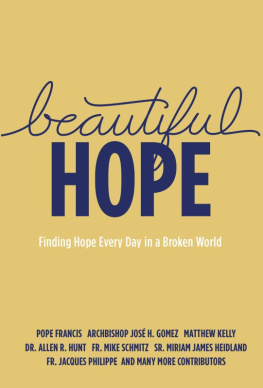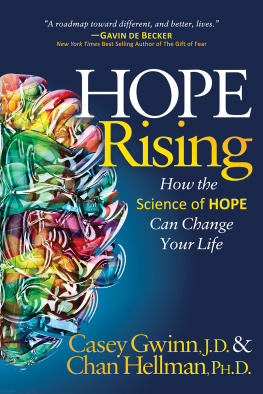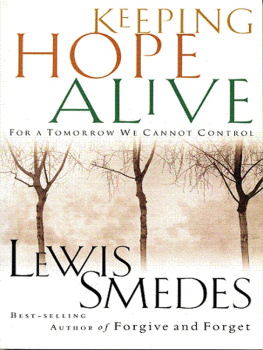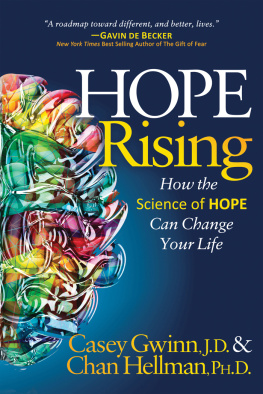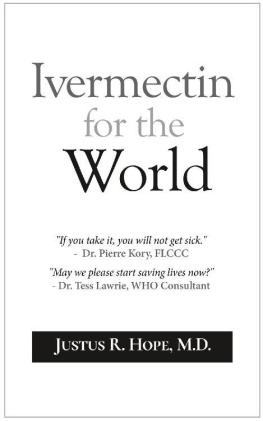The End of Hopethe Beginning
Narratives of Hope in the Face of Death and Trauma
Pamela R. McCarroll
Fortress Press
Minneapolis
THE END OF HOPETHE BEGINNING
Narratives of Hope in the Face of Death and Trauma
Copyright 2014 Fortress Press. All rights reserved. Except for brief quotations in critical articles or reviews, no part of this book may be reproduced in any manner without prior written permission from the publisher. Visit http://www.augsburgfortress.org/copyrights/ or write to Permissions, Augsburg Fortress, Box 1209, Minneapolis, MN 55440.
Jesus Wept, a poem by Ann Weems (Psalms of Lament, 1995) is used with permission of Westminster John Knox Press.
Cover Image Thinkstock
Cover design: Erica Rieck
Library of Congress Cataloging-in-Publication Data
Print ISBN: 978-0-8006-9966-6
eBook ISBN: 978-1-4514-4192-5
The paper used in this publication meets the minimum requirements of American National Standard for Information Sciences Permanence of Paper for Printed Library Materials, ANSI Z329.48-1984.
Manufactured in the U.S.A.
This book was produced using PressBooks.com.
Contents
As with all projects of this kind, many people have been part of it coming to fruition. First, I am grateful to the people whose lives have inspired this book and borne witness to hopes hidden horizons of possibility in the face of devastating loss. These people include patients, congregants, students, families, and caregivers, all of whom through struggle have found new ways to trust, persevere, and stay committed to life amid the pull to death. While I know the depth and breadth of lived human experience cannot find full expression in words on a page, in humility and gratitude I offer written words about their life stories, trusting that something of hopes horizons of possibility can be glimpsed through them. Thank you especially to those who read specific chapters and engaged them from their own experiences of care, loss, death, and trauma.
I am grateful to Principal Dorcas Gordon and the board of Knox College, whose thoughtful leadership and gracious support for research have enabled time and quiet space for this manuscript to be conceived and written. Many thanks go to Douglas and Rhoda Hall for their intellectual and spiritual inspiration and ongoing support. I am indebted to my early CPE supervisor, John OConnor, whose teaching on hope in clinical contexts engaged my imagination and fed my clinical practice. I am grateful to the people and leadership of St. Andrews Presbyterian Church in Toronto and particularly to the Rev. Dr. George Vais, whose invitation to provide a lecture series inspired the seeds and framework for this book. Much appreciation goes to Susan MacLeod and the Vais family for their gracious support for this work. I extend gracious thanks to my students, my colleagues at Knox College and the Toronto School of Theology, those within the Presbytery of East Toronto and the CPE supervisor group, and the people of St. Marks Presbyterian Church in Toronto. Among these communities, I have experienced the struggle and commitment to reach toward transcendent possibility in the face of trials and tribulations. These communities have inspired me and given me much food for the journey.
I am grateful to Kay Diviney for her thoughtful and incisive editorial work on chapter 2 and her willingness to have her holiday interrupted by my editorial needs. Kays many skills in editing, writing, and theological thought have been a great gift to me. Many thanks go to Helen Cheung, whose extensive research contributed to the inductive literature review presented in chapter 2. As well, I am appreciative of Will Bergkamp and the people of Fortress Press, whose commitment to excellence in Christian publishing has brought forth many outstanding books and continues to serve the ongoing formation of Christian thought, identity, spirituality, and engagement in the North American context. Their willingness to work with me on this project has inspired its timely completion. It is a privilege to work with them.
I extend gratitude to my friends and family: to Sue Koziey-Kronas for her authenticity, honesty, and willingness to allow me alongside her on the journey; to Ben, Caleb, Mark, and Hannah, whose lives continue to inspire and ground me; to Paul and Kath, whose ongoing support and generosity in sharing the cottage enabled time away to read, ponder, and write; to Harris, who has partnered with me through this project, reading and rereading every word and whose huge mind and heart for theology and ministry bear much fruit in these pages and in the shared story of our lives. Finally, I extend prayers of thanksgiving to the One within whose horizon we participate, whose hidden and gracious presence amid the adversities of life and whose ongoing call to trust and live without excuse bring me to my knees in humility and gratitude again and again.
Toronto, September 1, 2013
Introduction
Hoping against Hope
This book is about hope. In particular, it is about the presence and possibility of hope in the face of endings, in the face of death and trauma, in the face of the unalterable and unwanted crises in life. The bulk of the book explores diverse narratives of hope in which the recognizable yet mysterious presence of hope is intimated in the face of traumatic loss and death. We consider manifestations of hope that have emerged from the stories of people speaking from palliative-care beds and emergency rooms, from wheelchairs and long-term care facilities. In working with people facing death and traumatic loss, I have come to agree with William Stringfellow when he stresses, Hope is known only in the midst of coping with death. Any so-called hope is delusionary and false apart from the confrontation with the power of death. Thus, it is in the face of such extremity of being and death that we dig deeply to seek out narratives of hope that emerge at the edge of the horizon of lifes possibility.
Before presenting the goals and outline of the book, I share here my primary location in this exploration of hope. While doing research in constructive-systematic theology on the crisis of hope through the lens of a contextual theology of the cross, Many of the patients, families, caregivers, and students with whom I worked faced questions of hope and hopelessness every day. They included people in palliative care who were living their dying, survivors of trauma whose lives were stopped cold by sudden accident and violence, caregivers who yearned to find a means to hope in the face of extreme and multiple tragedies, and students who wrestled with questions of pastoral identity and with how to hope when fix-it solutions were not available. As I struggled to write systematically about ideas of hope and hopelessness in my research, I found myself in the midst of experiences that, in devastating and profound ways, caused me to pause and to pay attention. How do we hope at the end of hope? These patients, families, caregivers, and students became interlocutors for me, inviting me to see the many faces of hope in the midst of crisis and death. Bearing witness to the multidimensionality of hope in these people and their stories has opened up for me the scriptural narratives and theological renderings of hope in new and revitalized ways.
While it is located within the discipline of pastoral theology, this book is an exercise in practical theology, as it brings into dialogue concrete human experiences with theology, the Scriptures, philosophy, and health care research so as to serve the deepening of the spiritual life, theological thought, and practices of care in the face of suffering. While I affirm that there are important dialogues that need to take place between theology and the social sciences and that some social scientific methods allow space for theological commitments to be central, I am concerned that several social scientific methods eclipse transcendence from ways of knowing and, as such, do not provide an appropriate ground for pastoral theology.




